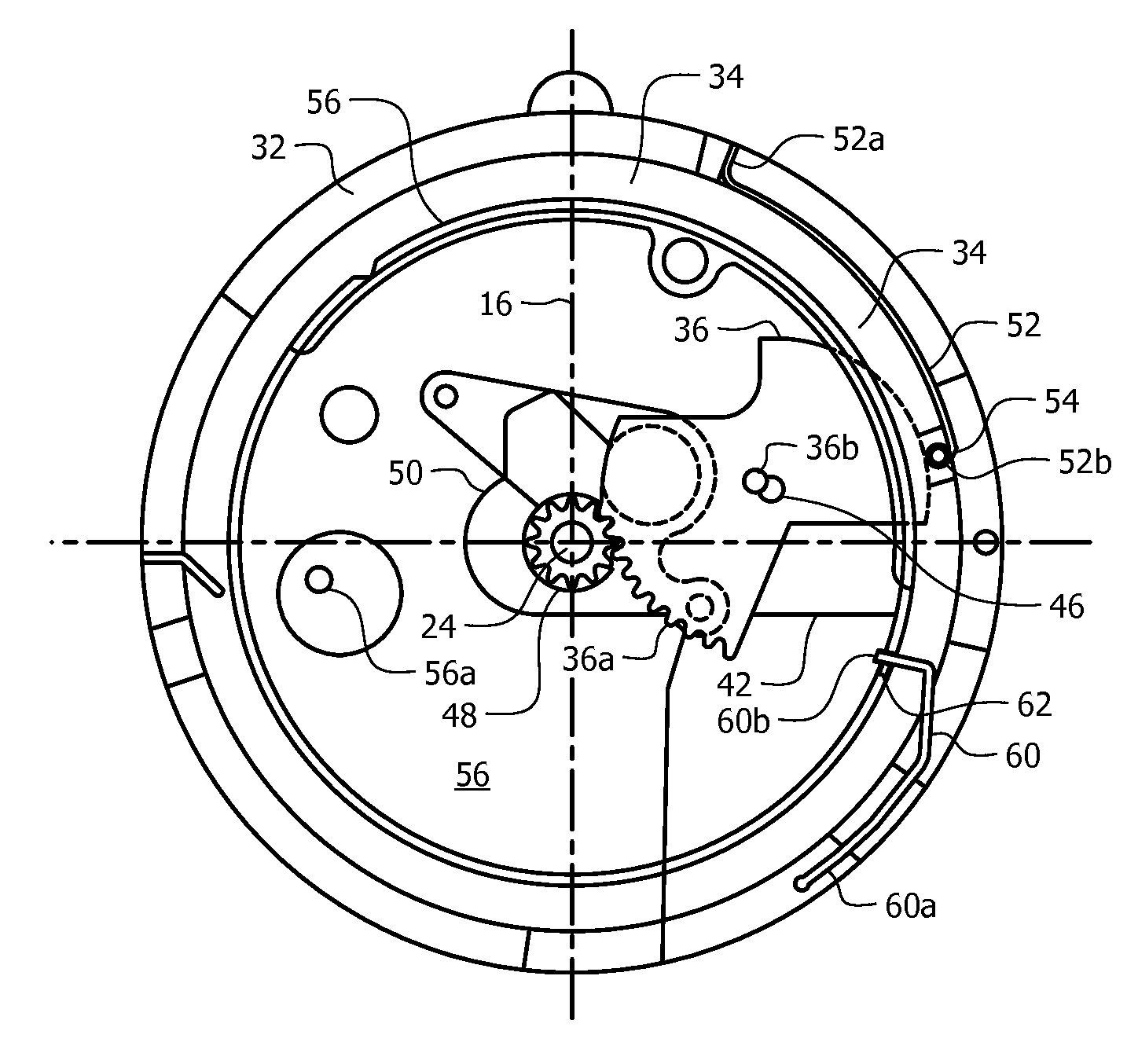Mechanical command to arm fuze
a technology of fuzes and mechanical components, applied in the field of command to arm fuzes, can solve the problems of sad will arm much too quickly, unrestrained arming time, and inability of gunners to rely on the effectiveness of fired ammunition
- Summary
- Abstract
- Description
- Claims
- Application Information
AI Technical Summary
Benefits of technology
Problems solved by technology
Method used
Image
Examples
Embodiment Construction
[0049]Referring now to FIG. 1, it will there be seen that a diagrammatic representation of a projectile or round equipped with the novel structure is denoted as a whole by the reference numeral 10.
[0050]Round 10 in this example is a typical 40 mm round. The novel command to arm fuze is denoted 12. Round 10, having been fired from a weapon, is depicted in flight, travelling in the direction of directional arrow 14. It is also spinning about longitudinal axis of symmetry 16 of round 10 and fuze 12. The trailing end of round 10 is filled with main explosive charge 18. As used herein, the leading end of any part is the end nearest the top of the drawing and the trailing end of any part is the end nearest the bottom of the drawing.
[0051]As best understood in connection with FIG. 2, fuze 12 includes hollow housing 20 having a generally inverted “U” shape, sometimes referred to in technical writings as a nosecone or an ogive. Hollow housing 20 houses all of the components of novel fuze 12....
PUM
 Login to View More
Login to View More Abstract
Description
Claims
Application Information
 Login to View More
Login to View More - R&D
- Intellectual Property
- Life Sciences
- Materials
- Tech Scout
- Unparalleled Data Quality
- Higher Quality Content
- 60% Fewer Hallucinations
Browse by: Latest US Patents, China's latest patents, Technical Efficacy Thesaurus, Application Domain, Technology Topic, Popular Technical Reports.
© 2025 PatSnap. All rights reserved.Legal|Privacy policy|Modern Slavery Act Transparency Statement|Sitemap|About US| Contact US: help@patsnap.com



